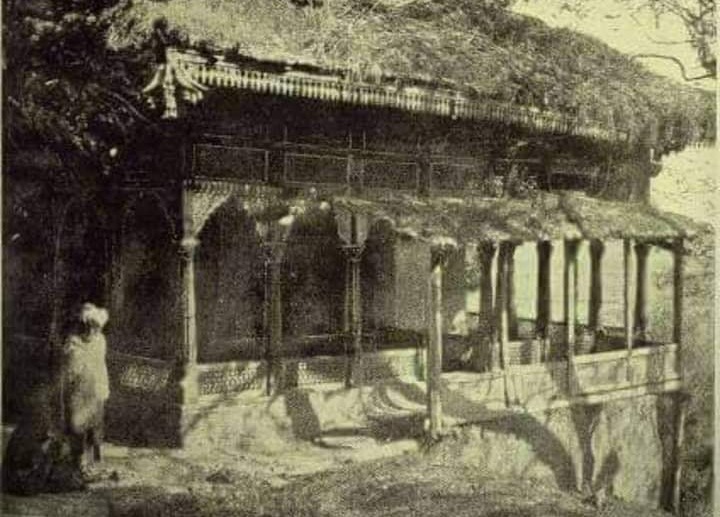
In April 1865, numbered in hundreds the Shawl workers took the lead against the autocratic empire of the Dogra Kings and organized a unique rising. On the historic day of April 29th, 1865, the workers joined the struggle to obtain their demands. It was perhaps the 1st organized Demand Day in the history of the class. Institute of Public Policy Research and Development (IPPRD) .
Workers from all parts of the Srinagar city marched in procession towards Zaldagar, Srinagar. They raised slogans and burnt down the effigy of Raja Kak Dhar, who was not only the Daroga of the Shawl Department but also worked as a contractor. He had taken a contract from the ruler and was personally interested to suck more blood from the shawl workers- Rao Farman Ali Malik- Kashmir :A Century Struggle(1846-1948)
To quell the protesters, the Dogra regime sent its forces under the command of Colonel Baajay Singh. The workers were cornered and then charged with guns and spears. After some deaths, the procession dispersed and many protesters ran towards the bridge Haji Rather and many of them drowned after falling down into the marshy canal.
Hundreds of workers suffered injuries and at least 28 dead bodies were returned to the people by the Dogra Army.
When the Maharaja of the time, Ranbir Singh received the information about the uprising, he ordered that the protesters be dealt with severely. He ordered that the dead bodies be thrown into the water secretly.
The Maharaja also desired punitive fines be imposed on workers Patwaris and others, who had shown any support to the uprising. He further desired that punitive fines be realized from all the agitators and their leaders be arrested and punished.
Kashmir was growing in discontent with the policies of the Dogra regime- a Joint Force was launched against the Empire. The Kashmiri Pandits launched the ‘Roti Movement‘ for the security of their bread as they suspected that the Dogra ruler of brushing aside and ignoring the Pandits. Kashmiri Pandits had power and authority, and Muslims….. were forced to work to keep the idle Brahmans in comfort- Sir Walter Lawrence.
Though silent, but the discontent was growing, among both the communities and by June 1924, an incident triggered a mass agitation against the Dogra regime.
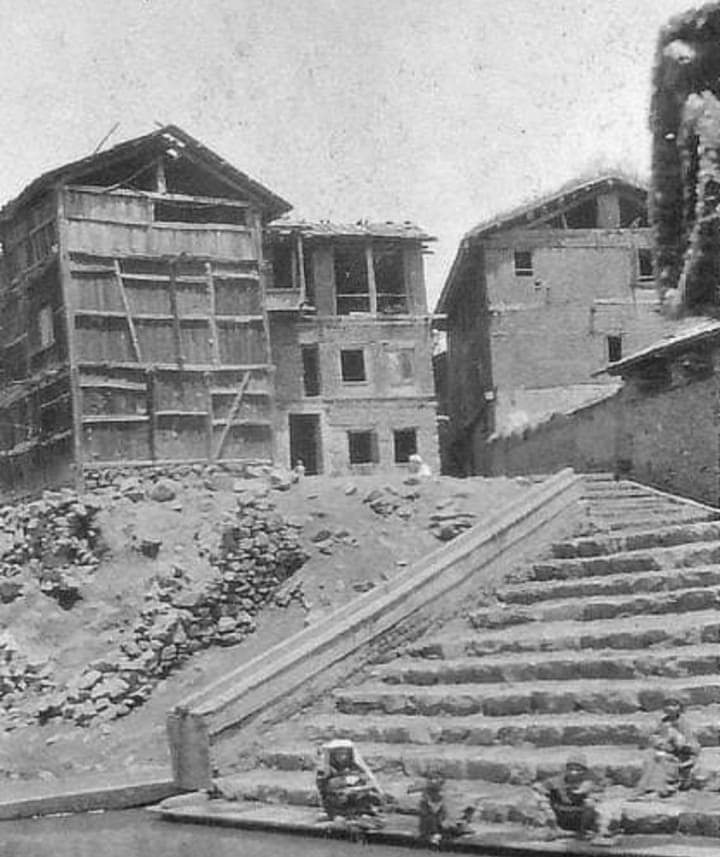
1924 was a year of massive political tumult. In June, Days after the Muslim leaders from Anantnag laid down the foundation of a pigeon tower around the famous chinar in the Sherbagh park, the Kashmiri Pandits from the town drafted letters to Maharaja Pratap Singh and on the 27th day of June in 1924, Jagmohan Singh one of the ministers reached the Anantnag township to take a stock of the situation.
Anantnag plunged into clashes between two communities over the construction of the mosque and Jagmohan Singh denied the construction of the mosque. There were attempts to forcibly take over the Muslim property in Anantnag’s Sherbagh and in several other places of Kashmir including Srinagar~ The wounded Paradise.
Gathered under the leadership of head preacher of Jamia Masjid Anantnag, the Muslims wanted to use the place for worship. By the first week of July 1924, an order was passed by the Maharaja regime objecting and ordering the construction of the Mosque be stopped.
Dogra Forces manned the streets for several days, disallowing movement of the public, People could barely move out of their houses- Documented by Ghulam Rasool Shah-Anantnag- 1927-2013.
The Maharaja regarded the Kashmiris as a race of slaves. He did not provide them with equal opportunities in trade, industry, education, jobs, agriculture, and above all for their upliftment as a community of culture. In fact, he discouraged the evolution of a regionalized community of culture in Kashmir.
The Muslims of the state, thus, became the worst sufferers from the triple dictum of racism, communalism, and classism. This was inherent in the legal philosophy of juridical structure under the Maharaja.
Maqbool Shah, a young man from Anantnag town, in his early 20’s, had been taken for forced labour after he was found secretly transporting books to the head preacher and subsequently a siege was placed around the township for several days. When the news of the arrest of the brother of the head preacher of Jamia Masjid, Molvi Qamar-u-Din (Qazi) spread in the town, people came out of their houses and marched towards Sherbagh.
Carrying stones on their back and shoulders, from the nearby mountain, people shouted the slogans of Allah o Akbar (Allah is great) for the construction of the mosque in open defiance of Maharaja’s order. Molvi Qamar-u-Din laid the first stone for the reconstruction of the Mosque.
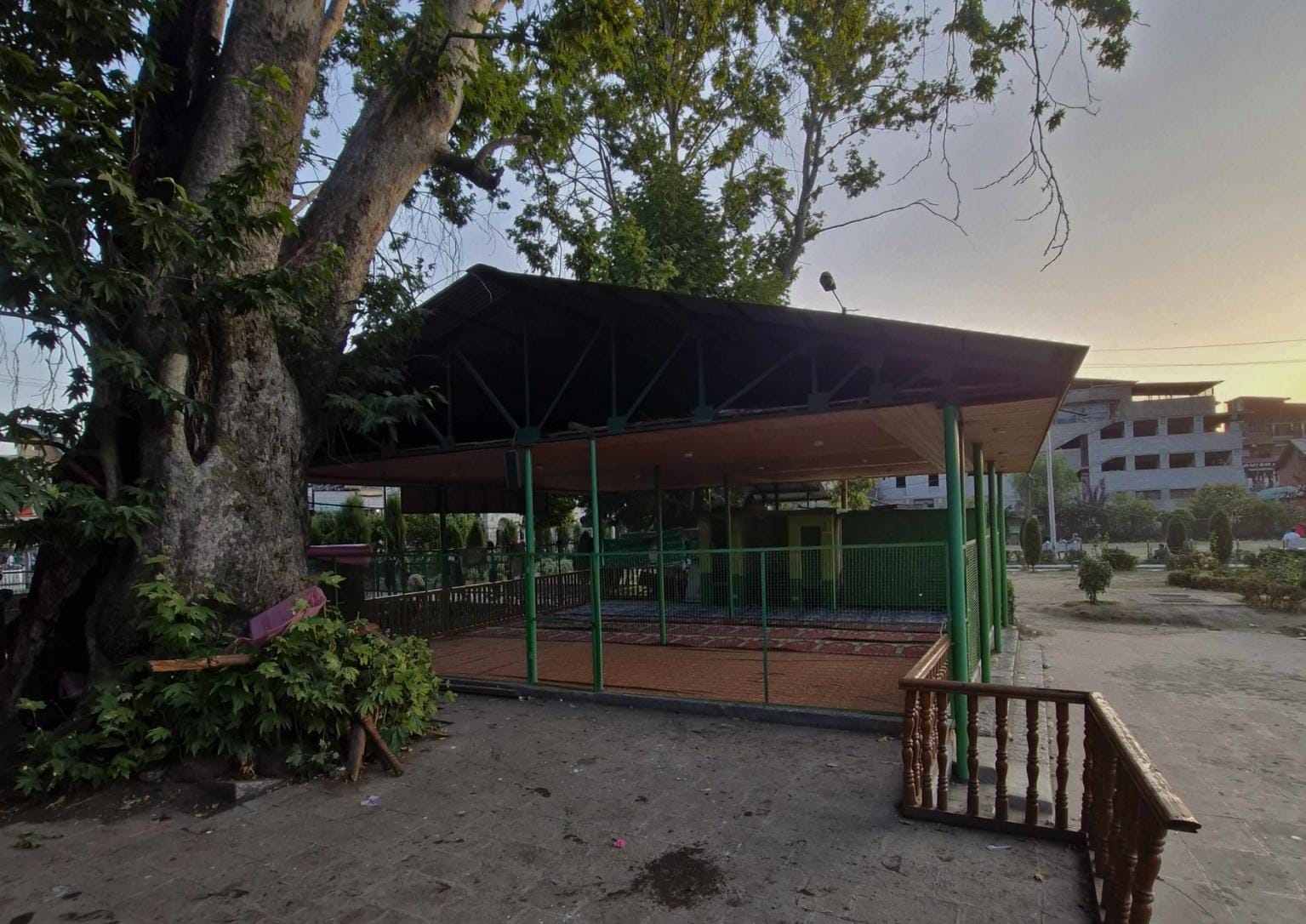
The Mosque (Dara Shikoh) at the spot was built by the Persian Emperor Shikoh also known as Dara Shukoh. Shukoh was the eldest son of the Mughal emperor Shah Jahan- Haji Mohammed Abdullah-Anantnag 1928-2020.
On 13th July 1931, an incident of gunfire took place at the Central Jail. The Muslim leaders from Anantnag were in constant touch with the leaders in Srinagar, eagerly waiting for any news. There were many protests organized in the valley and in this township of Anantnag too.
One of the most popular faces that came out of the 1931 movement was Sheikh Mohammed Abdullah and his arrest in September was followed by a popular agitation by the Kashmiri Muslims. On September 22, 1931, demonstrations of protest took place at the Jamia Masjid in Srinagar. Police and military forces were deployed to prevent processions, which were banned under existing orders. In the ensuing clash, two policemen were severely beaten, and the troops were heavily pelted with stones, resulting in over thirty injuries. Among the public, four men were killed and six or seven were wounded. Ravinderjit Kaur in Political Awakening in Kashmir writes that following the episode, curfew was imposed, and Section 144 of the Criminal Procedure Code was enforced.
Demonstrations and meetings occurred at various locations in Srinagar. Most processions were dispersed by the police, including one in Maisuma Bazar and another of children in Gawkadal. However, three men were killed in these clashes. The news of the protests and the subsequent barring of funeral procession, quickly spread to Anantnag, a town about fifty kilometers from Srinagar.
Raviderjit Kaur writes that on September 23, 1931, a meeting and a procession were held there to express solidarity with the events unfolding in Srinagar . The Darbar issued a communique warning that no demonstrations, processions, or meetings would be permitted., but the people went ahead with the meeting and police opened fire, killing nineteen and wounding five constables. The public was not allowed to carry the dead bodies in a procession for burial; however, they were permitted to bury the bodies on September 25, 1931, near the Khanqah of Reshi Sahib in Anantnag.
In Anantnag, a call for prayers joint prayers was issued for September 23, 1931, at the Old Eid Gah, near Stadium of Anantnag. The procession was planned from the Jamia Masjid. The other nearby mosque was in Malaknag area of the south Kashmir town. On Wednesday, (23 September 1931), as people took out a procession from Malaknag and gathered at the compound of Jamia Masjid Anantnag, the Dogra forces reached the spot and locked down the gates of Ziyarat-e-Reshi Sahab.
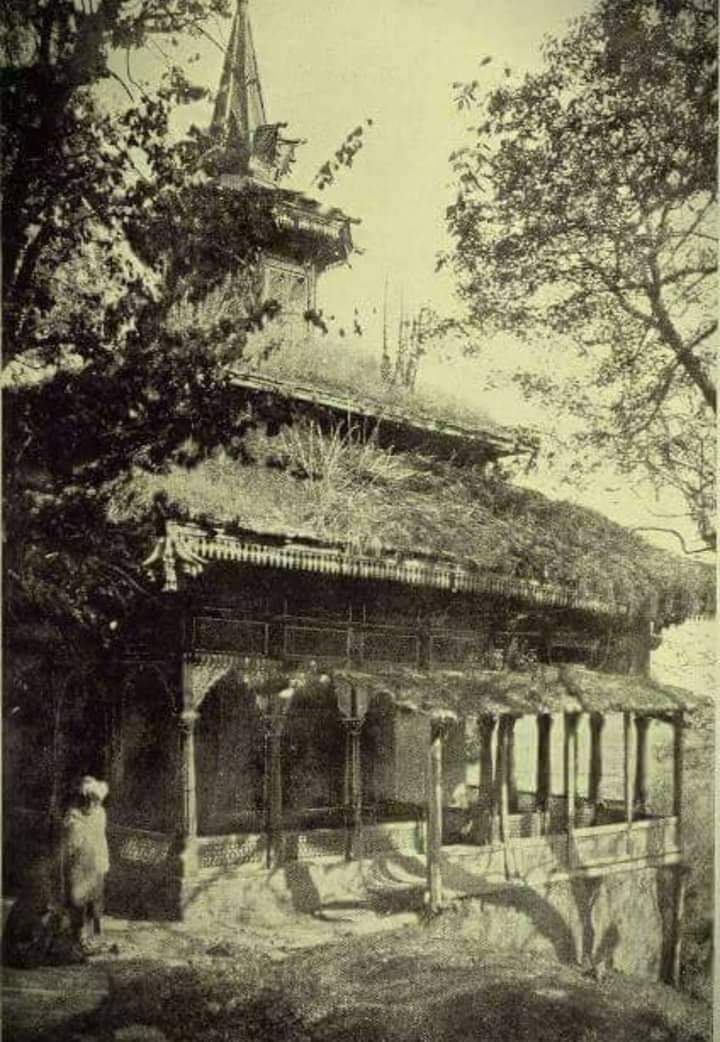
Anantnag was also incensed over the deaths of two individuals at Central Jail. These custodial deaths had further fuelled the anger and unrest in Anantnag. By Asar Prayers as the size of the crowds swelled, the Dogra forces retreated to Lal Chowk and people stormed out of the gate. The procession was led Molvi Qamar-u-Din, the head preacher of Jamia Masjid. The procession from Malaknag mosque was led by his brother, Ahmadullah Shah- Haji Mohammed Abdullah.
As per volume three of ‘Who is Who of Indian martyrs, Wali Mohammed Wani son of Mohammed Abli Wani was arrested in 1931 and sentenced to imprisonment for seven years for his role in the political uprising against the autocratic rule, however, he died in the jail under mysterious conditions, a few weeks after his imprisonment. Ghulam Mohammed Dar son of Resh Dar, another young man who had been arrested for treason and subsequently lodged at Srinagar’s Central jail. He too died under mysterious conditions.
Angered over the series of events, people reciting the slogans of Allah o Akbar, joined the procession from Malaknag and marched through the narrow streets of Cheeni Chowk, Reshi Bazar, and gathered inside the premises of Jamia Masjid and Hazrat Reshi sahab Khanqah.
From here, when people started marching towards the Eid Gah, however, the Dogra forces intercepted them near the Lal Chowk area where the Magistrate named Rog Nath Mattoo threatened the people to not march any further, however, people insisted that they wanted to march towards Eidgah. The first round of bullets were fired here near the Lal Chowk, resulting in two brothers; Peer Abdul Gani Shah and Peer Mohammed Maqbool Shah, both residents of Qazi Mohallah, Anantnag.
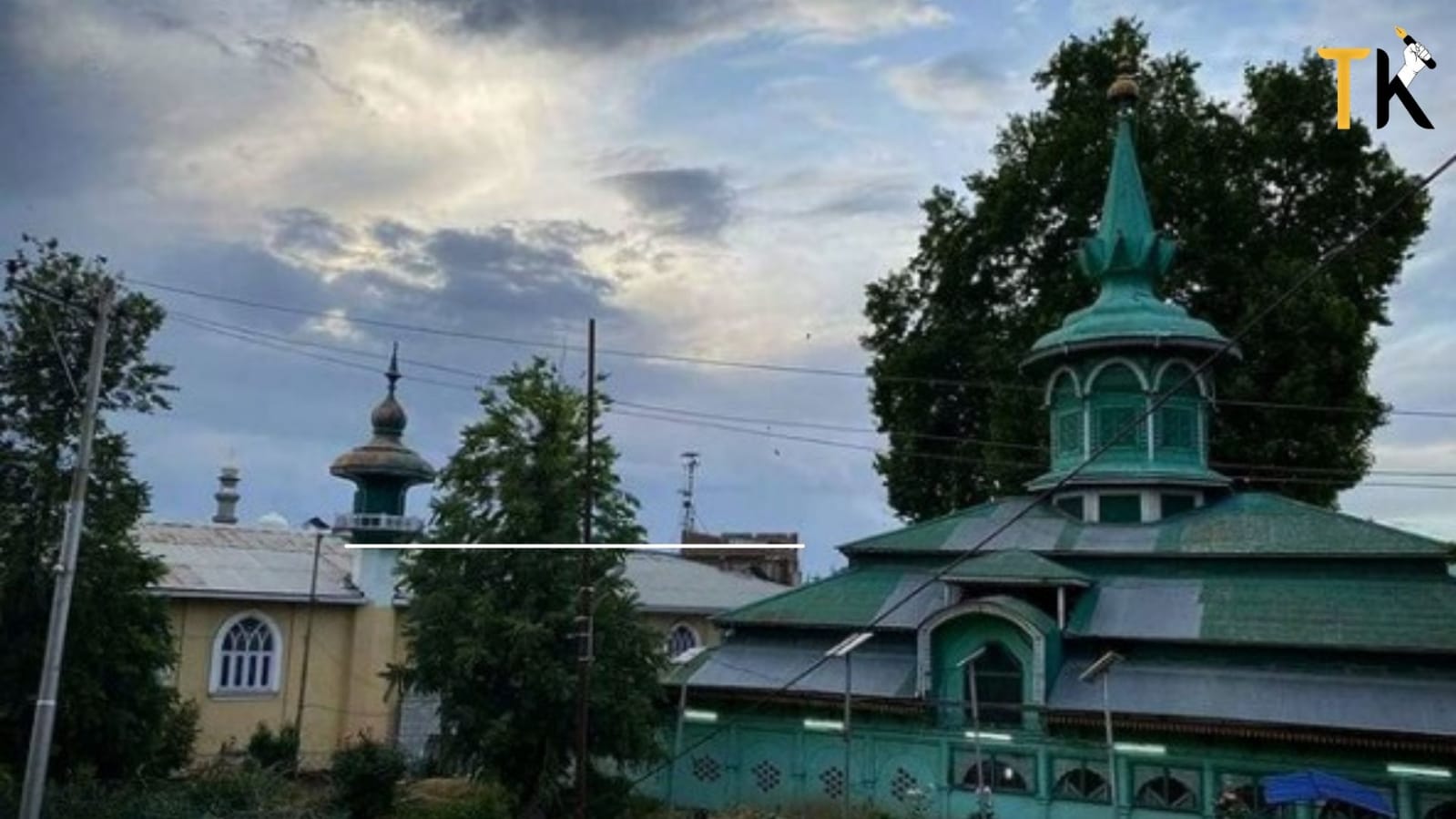
As the bullets rang through the town, people ran backwards into the matchstick thin streets of the old town in Reshi Bazar, but the Dogra Forces followed the procession. As the people passed through the narrow streets, chaos spread. Soon the sound of bullets reverberated yet again- 19 people had been killed, several others injured, however, historian Altaf Husain states that 25 persons were killed in Anantnag on the day, while several historians mention 16 killings.
After killing these persons, they (Dogra Forces) ran over their bodies, entered mosques, and kicked women who had been locked inside the Jamia Masjid by men. They stood guard in the streets not allowing people to move. They were looking for more people to kill to teach the protesters “a lesson”. One person asked the Dogra Forces to not fire as they were protesting peacefully. He too was shot dead.
“I saw him (my cousin), his heart pierced, blood oozing down his body, but he wore a smile on his face. He was happy to die for us (Kashmiris),” Molvi Qamar-u-Din told people on 25th September 1931 near Martyrs graveyard besides Jamia Masjid Anantnag where most of them were laid to rest.
People who had never seen the guns roar, hid in coops, in cowsheds or whatever they could find. Six more people were shot dead after being dragged out from their hiding. They (Dogra forces) continued their search for humans for several hours – Ghulam Rasool Shah.
It was only after it started growing dark that Dogra forces returned to their stations and people could take back their dead. The Dogra Forces returned the next day and did not allow people to bury the dead. They laid a siege around Jamia Masjid and blocked public movement.
It was only after the intervention of local Kashmiri Pandit leaders who met Rog Nath Mattoo who allowed the burials with conditions. The primary being, only families should be at the burial place.
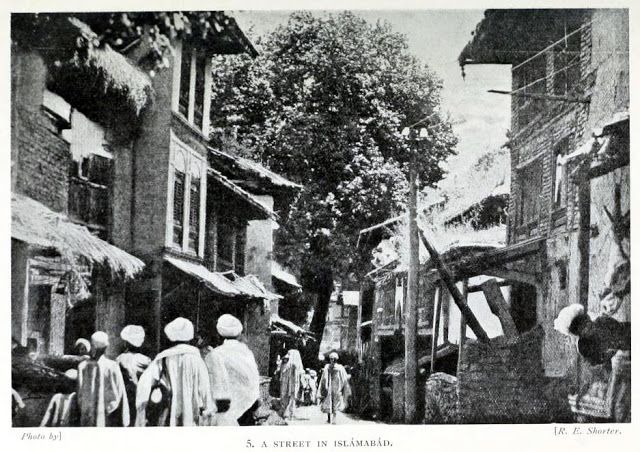
Days after his release on October 3, 1931, Sheikh Mohammed Abdullah visited Anantnag to pay homage to the martyrs who had been buried on September 25. His visit came in the wake of the tragic events that led to the deaths of numerous individuals and their subsequent delayed burial.
The following nineteen martyrs are interred in the Martyrs’ Graveyard of Anantnag. Their names are also listed in Volume Three of ‘Who is Who of Indian Martyrs’:
Aziz Sofi alias Ali Waza son of Mohammed Sidiq Waza
Ghulam Ahmed Chapoo son of Lassa Ji Chapoo.
Chikan Mohammed Bhat son of Ghulam Ahmed Bhat Chikan .
Chikan Mohammed Ramzan son of Chikan Moammed Rahman.
Abdul Gani Darzi son of Mohammed Ramzan Darzi.
Abdul Gani Bhat son of Abdul Rahman Bhat.
Kabir Shah Azad
Ghulam Ahmed Malik alias Abdul Ahad Zargar son of Habibullah Malik.
Abdul Rehman Malik son of Mohammad Malik.
Abdul Ahad Mir Parentage Abdul Gafaar Mir.
Ghulam Mohammad Pushoo son of Abdul Aziz Pushoo.
Ali Mohammed Reshi son of Wali Mohammed Reshi.
Sheikh Ghulam Rasool Parentage Ghulam Qadir Sheikh.
Mohammed Subhan Sofi son of Abdul Wahab Sofi.
Mohammed Jamal Wagay son of Adul Karim Wagay.
Habiullah Wani son of Abdul Samad Wani.
Juma Wani son of Abdul Samad Wani.
Peer Abdul Gani Parentage Ghulam Hassan Shah
Peer Mohammad Maqbool Parentage Ghulam Hassan Shah.
This article is based on an extensive review of various documents, books, and conversations with esteemed residents of Anantnag.




